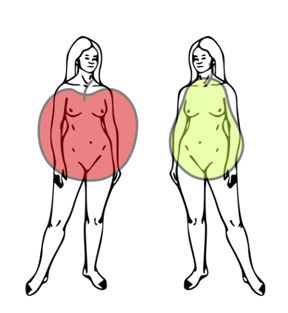Topic 1 . Obesity
Body Weight is the sum of bone tissue, muscle tissue and adipose tissue, plus the organs and liquids of the body. In adults, some of these components go through normal changes such as noticeable growth, reproduction state, changes in the levels of exercise and aging effects. Water, which constitutes from 60 to 65 % of our body weight, is the most variable component. Our state of hydration can provoke variations worth several kilograms.
Adipose tissue: fat deposits
Fat is the main energy reserve of our body. It is stored in deposits known as adipose tissue. The appropriate adiposity of a woman is around 20 to 27 % of their body weight. In men, the appropriate adiposity is around 12 to 15 %.
The total amount of fat can suffer great variations. This makes it possible to compensate growth needs, reproduction and aging, and fluctuations in physiological and environmental circumstances, such as the availability of food and the demands of physical labour. This variability is a function of adipose cells which have the ability to increase or decrease in size as well as multiplying their numbers.
1. 1 Classifying
The distribution of fat tissue in the body is different in men and women. It is also different in an individual level. According to the distribution of fat tissue in women, we can classify obesity in 2 ways:
In women, “gynoid” is characterized by its “pear shape”, which originates from fat deposits around the thighs and gluteus (buttocks). Women with a gynoid-type obesity don't present the alterations in glucose metabolism seen in obese women (the same weight) whose fat is distributed in the "android" shape.
The "android" or “apple shape” distribution in males is characterized by fat deposits around the waist and upper abdomen. This type of regional deposit of fat is characterized by the quick moving of free fat acids. It is related to hypertension, cardiovascular diseases and diabetes (insulin non-dependant).
For this reason, it is extremely important to determine the type of obesity a person possesses because the metabolic risks are different from one another.

Almost every fat deposit comes directly from the triglycerides found in our diet, as indicated by the fact that the composition of fat acids from the adipose tissue is similar to those of the diet.
An excess of consumed carbohydrates also transforms into fat acids in our liver and becomes a part of those deposits.

